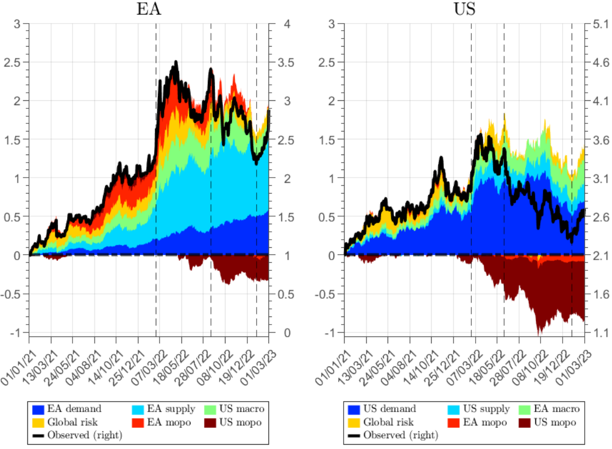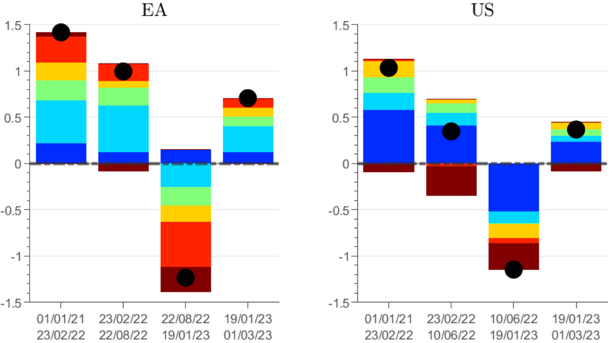References
Arias, Jonas E., Juan F. Rubio-Ramirez, and Daniel F. Waggoner (2018), “Inference based on structural vector autoregressions identified with sign and zero restrictions: Theory and applications,” Econometrica, Vol. 86(2), pp. 685-720.
Brandt, Lennart, Arthur Saint Guilhem, Maximilian Schröder, and Ine Van Robays (2021), “What drives euro area financial market developments? The role of US spillovers and global risk”, ECB Working paper series, No. 2560, May.
Bruno, Valentina and Hyun Song Shin (2015), “Capital flows and the risk-taking channel of monetary policy”, Journal of Monetary Economics, 71, 119–132.
Cecchetti, Sara, Adriana Grasso and Marcello Pericoli (2022). “An analysis of objective inflation expectations and inflation risk premia”, Temi di Discussione (Economic Italy Working Papers Series), 1380, Bank of Italy, Economic Research and International Relations Area.
Cieslak, Anna and Andreas Schrimpf (2019), “Non-monetary news in central bank communication”, Journal of International Economics, 118, 293–315.
Cieslak, Anna and Hao Pang (2020), “Common Shocks in Stocks and Bonds”, SSRN Electronic Journal, 2020.
Degasperi, Riccardo (2021), “Identification of Expectational Shocks in the Oil Market using OPEC Announcements”, mimeo.
Farhi, Emmanuel and Ivan Werning (2014), “Dilemma not trilemma? Capital controls and exchange rates with volatile capital flows”, IMF Economic Review, 2014, 62 (4), 569–605.
Jarocinski, Marek and Peter Karadi (2020), “Deconstructing monetary policy surprises -The role of information shocks”, American Economic Journal: Macroeconomics, 12 (2), 1–43.
Rey, Helene (2016), “International channels of transmission of monetary policy and the Mundellian trilemma”, IMF Economic Review, 64 (1), 6–35.
Venditti, Fabrizio and Giovanni Furio Veronese (2020), “Global Financial Markets and Oil Price Shocks in Real Time”, SSRN Electronic Journal, 2020.
Visco, Ignazio (2023), “Inflation expectations and monetary policy in the euro area”, 95th International Atlantic Economic Conference, Robert Mundell Distinguished Address, March 23 2023.






